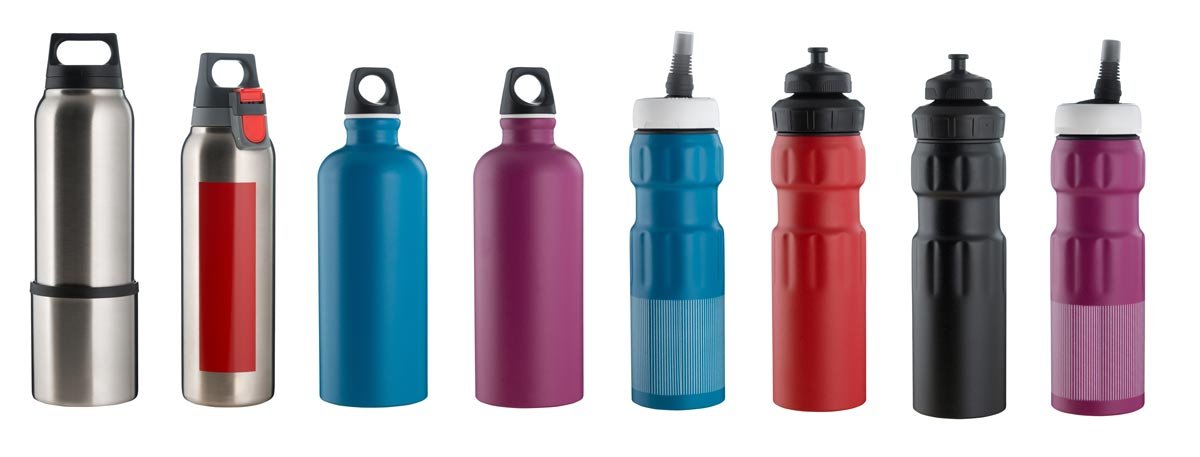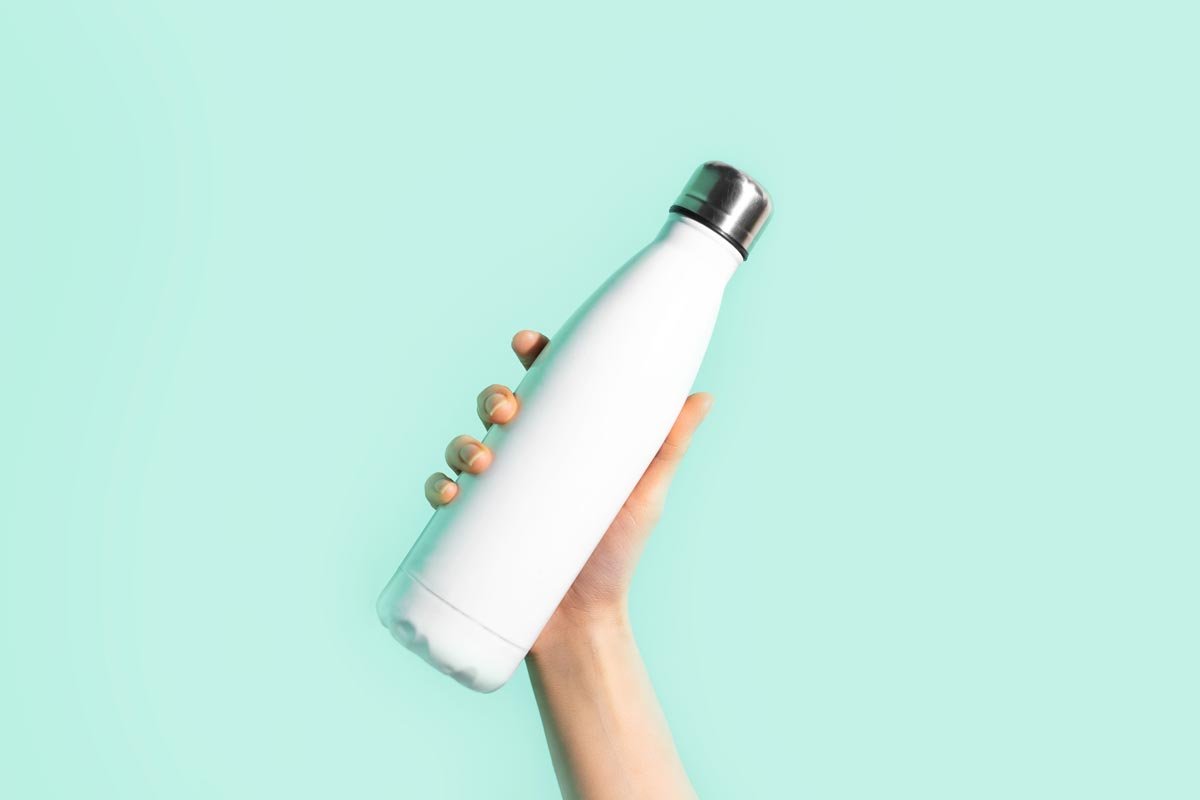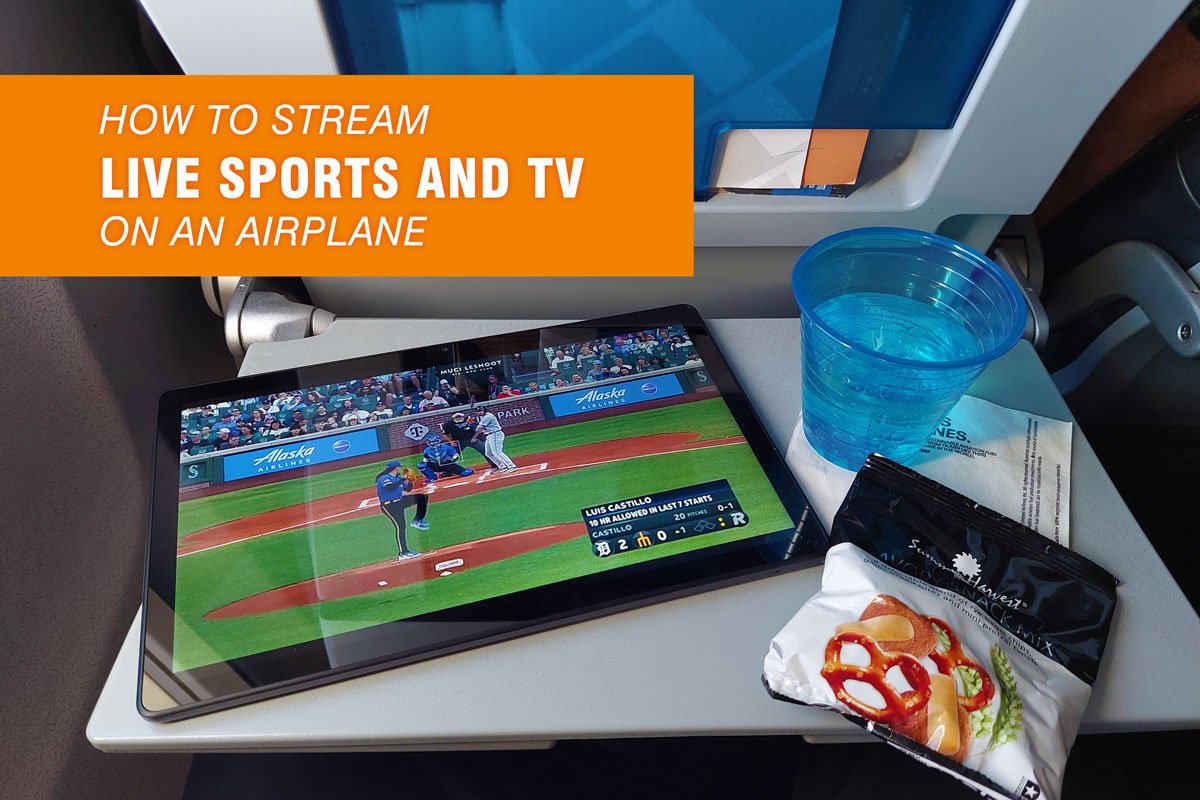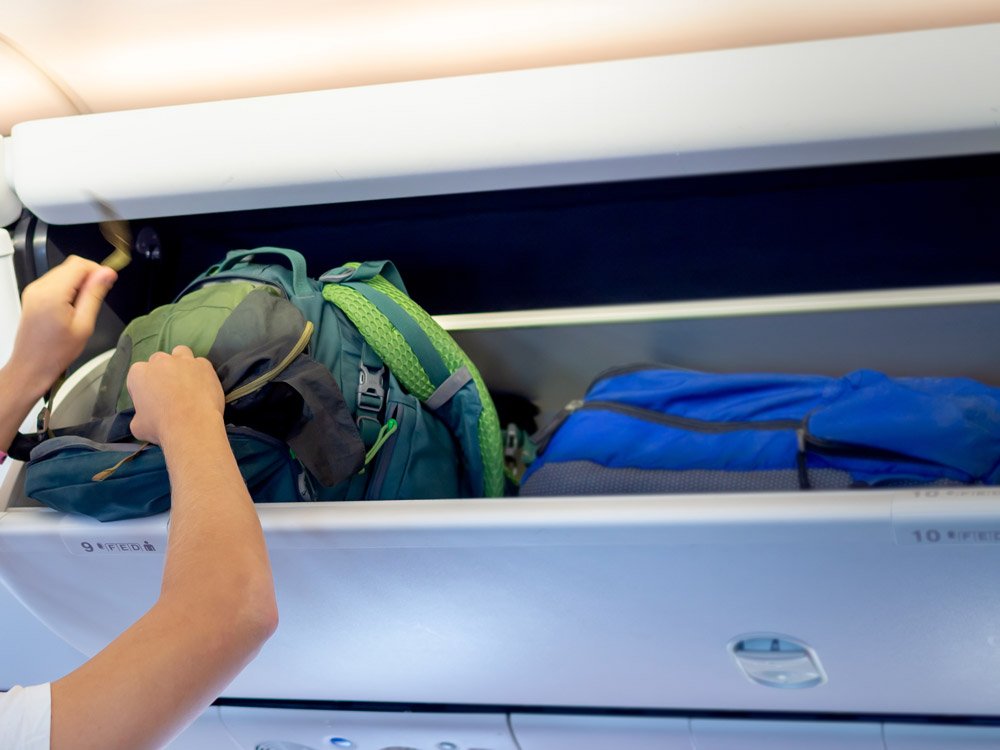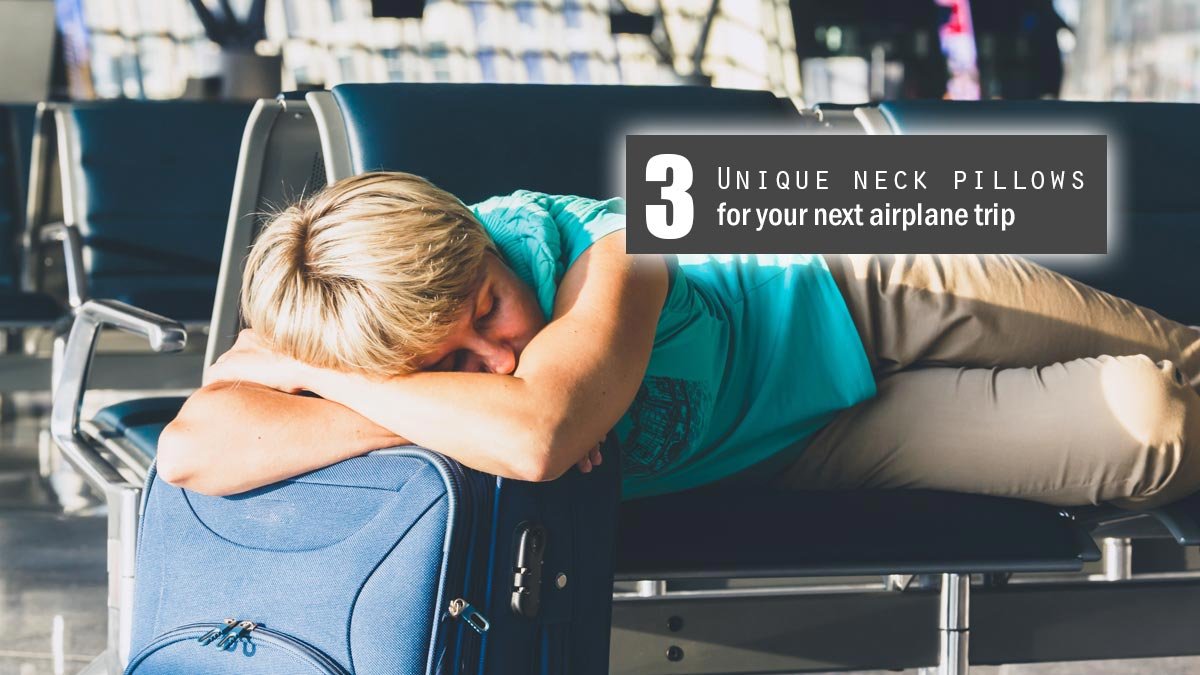Best Water Bottles for Airplane Travel
There are hundreds of different types of reusable water bottles on the market. Only a select few water bottles are optimal for traveling by air in an airport and on an airplane.Image: Mny-Jhee/Shutterstock.com
In a sea of hundreds of reusable water bottles out there, some are better suited for travel than others.
There are many considerations that go into deciding what the best water bottle for road trips, plane trips, vacations, hiking, camping, and travel. Several of these considerations include durability, capacity, material, ease of use, look and style, etc.
However, when seeking the best water bottle for air travel through airports and on airplanes, additional factors need to be considered.
ADVERTISEMENTBenefits of buying a reusable water bottle for airplane travel
Save Money – we’ve all bought that $4 bottle of water at the airport and felt cheated. A reusable water bottle can be refilled for free at the airport. Many airports have water bottle fillers next to the drinking fountains or in the middle of concessions areas.
Reduce single-use plastics – the environmental impact of single use water bottles does not need to be stated here, as most of us are aware of the problem. Some airports, such as San Francisco International Airport have even banned the sale of single-use plastic water bottles on airport property.
Re-usable water bottles can be used anywhere – they are durable, and fancier bottles are almost like thermoses, keeping your drink cold or warm for hours. Beyond travel and flying, reusable water bottles can be used at home, on a hike, during a workout, or at the office.
Recommended water bottles for plane travel
There’s a number of considerations and factors that go into determining the perfect water bottle on an airplane - size, capacity, cleanliness, leak-proofness, and graspability. You can read more about our methodology here.
With all these considerations discussed, what reusable water bottles do we recommend you buy for your next airplane trip?
Our preference is to go with metal bottles due to their durability, lower reliance on plastic, and graspable finish texture. But as far as plastic bottles, we’ll suggest a few collapsible bottles for travelers looking to save space.
MiiR water bottles
Several of our favorite reusable water bottle lines come from Seattle-based MiiR. One of the best things about MiiR, aside from their products, is their corporate values. They are a Certified B Corp, which is a third-party certification that measures a company’s social and environmental performance. MiiR is also a Climate Neutral Ceritifed brand. A portion of revenue from each MiiR bottle that is sold is earmarked toward grant programs for non-profit organizations.
MiiR has three primary water bottle lines that are great for the whole family:
Wide Mouth
Narrow Mouth
Kids
All three types of bottles are stainless steel, come in an assortment of colors, and feature a vacuum insulated double-wall design to keep your drink cold or hot. There are also different types of lids, such as their leakproof locking Hatchback™ Chug Lid, that can be purchased directly from MiiR.
We would recommend going with their 20-ounce Wide Mouth, 23-ounce Narrow Mouth, or 12-ounce Kids Bottle. These all contain an ideal water capacity to get you through your flight and is packed into a slender 2.75” diameter bottle that would be ideal for a backpack or seatback pocket. The slightly matte powder coat finish provides some subtle enhanced grip ability.
MiiR is a sustainable brand, and part of that brand includes serviceability of your bottle. MiiR has a program that allows parts of your bottle to be individually replaced rather than having to replace the entire bottle.
Hydro Flask water bottles
A well-known, more mainstream brand, the features of a Hydro Flask water bottle are similar to MiiR’s offerings, from its stainless steel material, to its insulated core, and its textured powder coat finish. Hydro Flask’s brand proposition also has a social element, though definitely not as strong and deep as MiiRs.
If you’re a fan of colors, Hydro Flask has an entire spectrum of colors to match your personality and style.
We would recommend going with their 24 ounce Standard Mouth model, which gives you three cups of water, and a slightly offset neck to help keep that mouth contact area cleaner. Sized similarly to the MiiR bottles, the compact and slender profile of Hydro Flask’s 24 ounce bottle should help when it comes to traveling on an airplane.
Hydro Flask’s Standard Mouth 24-ounce bottle comes in an assortment of colors (a few of which are pictured below). These include Cobalt, Clementine, Stone, Laguna, Carnation, Olive, and more.
Collapsible Water Bottles
Collapsible water bottles are best for people who need to pack efficiently and have little space to spare.
These water bottles are different in that they will typically be made of plastic. Additionally, because of their ability to flatten and roll up, they do not provide much insulating properties and, over the long run, aren’t as durable as a stainless steel bottle.
One other disadvantage of a collapsible water bottle is that their overall dimensions (when expanded and deployed) tend to be larger than a rigid water bottle. However, their collapsibility more than compensates for the larger size.
A few we would recommend are Nomander’s 22 ounce bottle, HYDAWAY’s 17 ounce bottle, and Vapur Shades’ 23 ounce bottle.
most important considerations when buying a water bottle for your next flight:
Water bottle size and capacity: Get a bottle that holds enough water to last the entire flight
Water bottle dimensions and compactness: Personal item storage space on planes is at a premium. Unless you want to be holding your bottle for the entire flight, stick with slim bottles with a smaller diameter that can fit in your backpack, next to your backpack, or in the seatback pocket.
Water bottle cleanliness: Since you’ll most likely be storing your water bottle near the airplane floor or in the seatback pocket in front of you, get a bottle where the surface you’ll be putting your lips to is mostly protected from touching dirty surfaces. Your immune system will thank you.
Leak proof: Air pressure changes in cabins can force cheaper bottles to leak, so you’ll want to get one with a good cap that can withstand pressure.
Easy to grip: You’ll want a bottle that’s easy to grab since you’ll be leaning over to grab it and you also don’t want to accidently spill your water all over your seat neighbor.
An airline passenger drinks out of a reusable water bottle at the airport.
Image: Grusho Anna/Shutterstock.com
Importance of staying hydrated while flying on airplanes
The first consideration we’ll address is water bottle size and capacity.
According to the Mayo Clinic, an average adult should intake about 11 to 12 cups of fluid per day for women, and 15 to 16 cups of fluid per day for men. About 20% of our daily intake comes from food. The rest should come from water and beverages, which is where the general recommendation of drinking 8 to 12 cups of water per day is derived from.
Airplanes also have low humidity levels (to prevent structural corrosion in the fuselage) and are pressurized at high altitudes, both of which exacerbate dehydration. Imagine a dry, high altitude desert – that’s what the air in an airplane cabin could be compared to.
How big of a water bottle should you get for the airplane?
Most flights within North America are 4 hours or less.
Based on the recommended daily water intake, within this flight time you’ll want to drink at least 2 to 4 cups of water to avoid the typical symptoms of dehydration such as light headedness, rapid heart rate, confusion, etc. None of these symptoms are how you want to start your vacation or business trip.
What this translates to is that the ideal water bottle size for flying on a plane should hold somewhere around 20-24 fluid ounces (or about 600 to 700 mL).
This gets you about 2 to 3 cups of water, plus any additional cups you’ll have during your airline’s beverage service.
Slim and narrower diameter water bottles work best on a plane
Another key to selecting a good water bottle for flying on a plane is finding one that is slim, but still large enough to hold an ample amount of water for your entire flight.
Slim water bottles are beneficial for taking on planes due to the tight spaces you’ll be keeping the water bottle stored.
You’ll most likely be keeping your water bottle with a backpack under the seat in front of you, or in the seatback pocket. Space under an airplane seat is limited both in width and height. Seatback pockets can only stretch so far. Therefore, water bottles with a larger diameter may prove to be problematic for these locations.
Slim water bottles work best on airplanes. Due to their compactness, they can easily be stored in a seatback pocket, in a backpack, or under the seat in front of you on a plane.
Image: Lalandrew/Shutterstock.com
Find a water bottle that conceals its mouth piece
Airplanes are not known to be the cleanest spots in the world. One common spot for storing your bottle is near the floor, by your feet and other passengers’ feet.
It goes without saying that you probably don’t want shoes or airplane carpet touching the mouthpiece of your water bottle.
To stay healthy on a plane, you’ll want to look for a bottle where the cap itself covers the drinking surface, or a bottle where the mouth piece rotates and tucks into a protected position.
Airplane water bottles should be leak proof
Sometimes reusable water bottles come with really poor lid designs that don’t seal up perfectly. This can cause leaks that get everything around the bottle wet. You’ll most likely be storing your bottle sideways under the seat in front of you, or you’ll be placing it in your backpack, which then subsequently ends up sideways. This sideways a position makes a water bottle prone to leaks if the lid doesn’t have a good seal.
Another factor that can cause leaks is the fact that airplanes have pressurized cabins. The pressure changes during ascent and descent can create a pressure differential between the cabin air and the air inside your water bottle. If you’ve ever taken a full bottle up a mountain before and opened it, it has most likely squirted at you. The same can happen on a plane.
So to prevent your water bottle from unknowingly leaking and oozing water due to pressure differences is another important reason to get a bottle with a leak-proof lid design.
Airplane water bottles should be easy to grip
When you’re on a plane, you can sometimes drop things. It happens. Not a huge deal, except that with how tight airplane cabins can be, you don’t want to be twisting your body to pick up something you dropped. This means we would recommend getting a water bottle with a larger lid that’s easier to handle and less likely to fumble.
Additionally, the bottle itself should be easy to grip. You don’t want to accidently lose your grip and spill your water all over the passenger next to you. Bottles that have a slightly rough finish, like a metal bottle with a powder coat, help provide an additional gripping texture. Slimmer bottles, as we’ve suggested above for space constraints, are also easier to grip.
Other Airplane travel Gear
You may also be considering what the best neck pillow for an airplane is.
Related Content

